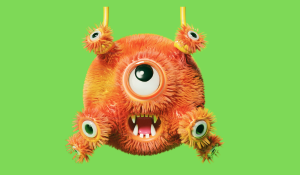In mental health, there’s light at the end of the tunnel. And it’s radiating from Gen Z.
As a qual research company serving clients across categories, themes emerge in unexpected and surprising places. Seeing emerging events and cultures that define what it means to be human in today’s tech and social media-rich world makes our work inspiring and humbling. The sense of discovery of themes and trends fuels more nuanced understandings of the lives of participants across the studies we conduct. In this series, we share some of the most exciting trends we’re seeing, which we hope will inspire you, too.
Why is it so difficult to talk about the intimate experiences of anxiety and depression, bipolar and schizophrenia, OCD and ADHD, suicidality, eating disorders, and PTSD? Why do people feel so alone in their experiences of pain? Where are there glimmers of hope and the possibility for change? We believe that the answers to these questions lie in thousands of conversations we’ve had with Gen Z.
Despite the fact that an estimated 1 in 5 Americans experience mental illness, for many, there’s shame and embarrassment linked to that experience – a sense that this is a weakness to be hidden and dealt with alone. The stigma attached to mental illness can deepen that feeling of alienation and also prevent people from seeking help when they need it. But in our research, we’re seeing that there’s a sea change unfolding. People are tired of being lonely, suffering in isolation. They want to be listened to and heard at an intimate, more vulnerable level. They want empathy and connection in facing their own mental illnesses and in being there for those they love.
Private chat, akin to therapy, creates a neutral space where people feel safe to talk about their most intimate struggles. Sometimes it’s easier to talk to a stranger than to someone you know well. You don’t have to be concerned about the people you love, you don’t feel judged, you feel safe to muddle through the process of trying to understand the nature of your own experiences without having to articulate them perfectly. We’ve heard stories of both the pain and relief of being medicated after a bipolar diagnosis, or finally identifying that it’s not laziness or lack of motivation but ADHD that affects people’s success, or the catharsis in articulating the grief and panic over a child’s suicide attempt where, in private chat, they don’t have to be the strong and steadfast adult who has all the answers. People want to share - they’re desperate to share - but in their daily lives, fear often forecloses the possibility of talking more openly.
The topic of mental illness emerges across categories that may have nothing to do with mental health. We see the psychological effects of body image and self-care in health & wellness and fashion. But we also witness candid confessions about how travel can both evoke anxiety and be a healing experience where travelers can truly be themselves without fear of the judgment they may feel in their daily lives. We’ve uncovered how food and drink can both exacerbate poor mental health as well as be a source of comfort and healthful emotional sustenance. In healthcare studies, people talk passionately about both the life-saving therapy and psychiatric support they’ve received as well as the devastating consequences when this care isn’t available for themselves or those they love.
Suicide is one of the leading causes of death in the United States. Across the general population, suicide rates remain high (and have even increased) in recent years. Among youth, suicide rates increased between 2011 and 2021 – a phenomenon attributed to contemporary threats to wellbeing, such as social media, bullying, the fear of school shootings, the climate crisis, and more recently, the pandemic. But between 2021 and 2022 suicide rates among 10-24 year olds suddenly decreased by more than 8% according to the CDC. What does this remarkable shift mean for all of us? Could it be that the antidote to the loneliness and silent suffering from mental illness lies in the wisdom of certain young people today? Might listening to these particular young people be the key to a fundamental societal transformation, where open conversations about mental health are normalized, supported, and encouraged? Is it possible that the light at the end of the tunnel lies somewhere in this new generation? From the many respondents we’ve talked to who belong to Gen Z, we think it’s very possible.
In the stories our respondents share, we’re seeing how so many young people are reshaping the way people across generations are thinking about mental health – that it’s not something to be ashamed of or kept a secret, but instead something to be shared and talked about candidly. They recognize and feel deeply that the state of the world and future of the planet has never been so bleak. That the tragedy of this reality has led to skyrocketing rates of depression and anxiety and exacerbated most other mental conditions. At the same time, they know that sharing about their mental health struggles combats the loneliness people feel in facing their own challenges as well as communicating to others that they’re not alone. So many people share the same struggles, the same kinds of pain, the same kinds of relief felt when you get the help you need. In this way, Gen Z have harnessed one of the great strengths of humanity: community.
When we get briefs aimed at understanding general traits of Gen Z, we’re always cautious to avoid generalizing, to instead understand the nuances and diversity of experiences in this generation. It can be dangerous to generalize because it forecloses the possibility of hearing divergent narratives that tell us something different. In the context of things like mental health, it can also be dangerous to slip into the trap of thinking they have it all figured out, when so many are suffering from (and in) the world we’re leaving them. But it’s also in Gen Z that we believe we can find hope. It’s from leaders in this new generation that the bravery necessary to affect change is rooted. They’re who we can look to for answers. Can we, as a society, be courageous enough to follow their lead?



